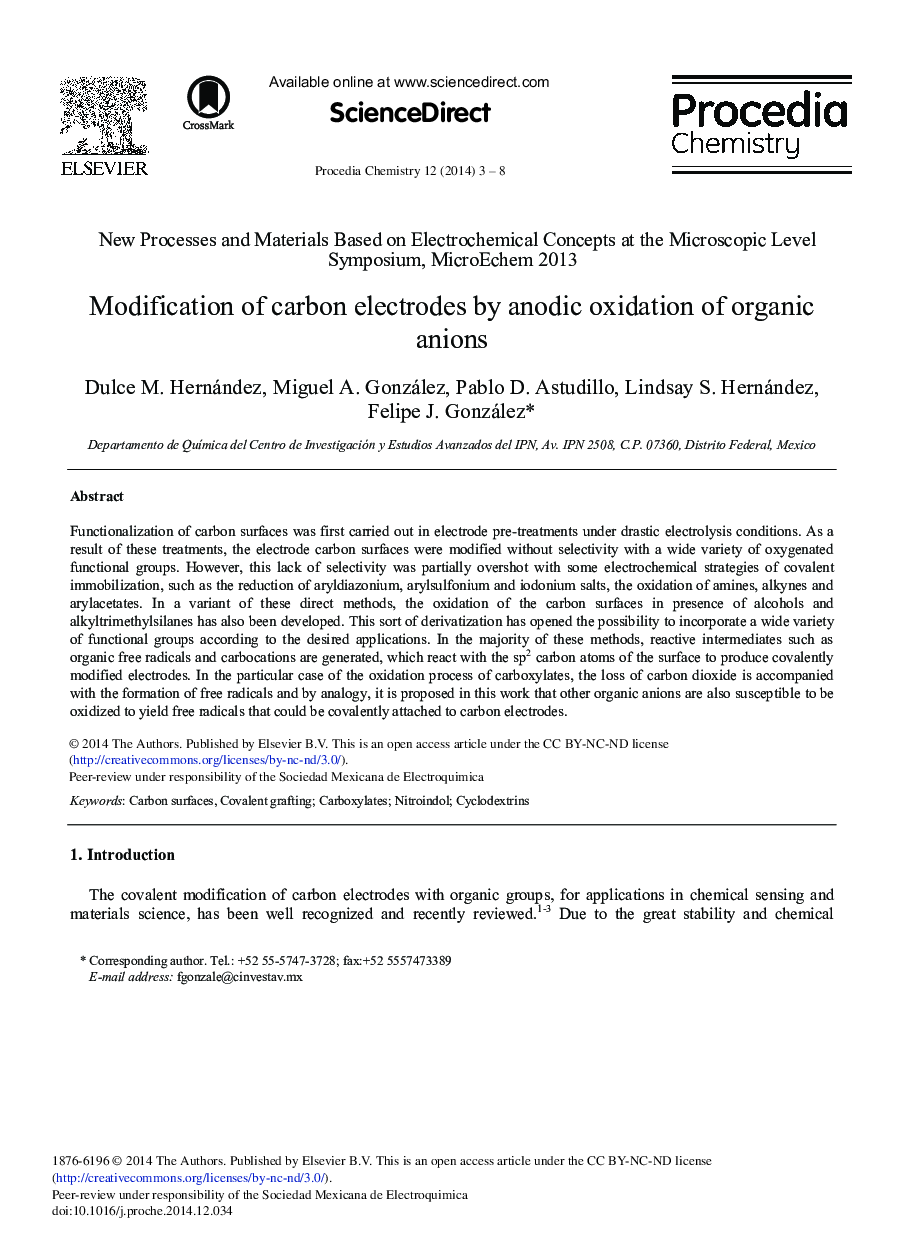| Article ID | Journal | Published Year | Pages | File Type |
|---|---|---|---|---|
| 239743 | Procedia Chemistry | 2014 | 6 Pages |
Functionalization of carbon surfaces was first carried out in electrode pre-treatments under drastic electrolysis conditions. As a result of these treatments, the electrode carbon surfaces were modified without selectivity with a wide variety of oxygenated functional groups. However, this lack of selectivity was partially overshot with some electrochemical strategies of covalent immobilization, such as the reduction of aryldiazonium, arylsulfonium and iodonium salts, the oxidation of amines, alkynes and arylacetates. In a variant of these direct methods, the oxidation of the carbon surfaces in presence of alcohols and alkyltrimethylsilanes has also been developed. This sort of derivatization has opened the possibility to incorporate a wide variety of functional groups according to the desired applications. In the majority of these methods, reactive intermediates such as organic free radicals and carbocations are generated, which react with the sp2 carbon atoms of the surface to produce covalently modified electrodes. In the particular case of the oxidation process of carboxylates, the loss of carbon dioxide is accompanied with the formation of free radicals and by analogy, it is proposed in this work that other organic anions are also susceptible to be oxidized to yield free radicals that could be covalently attached to carbon electrodes.
